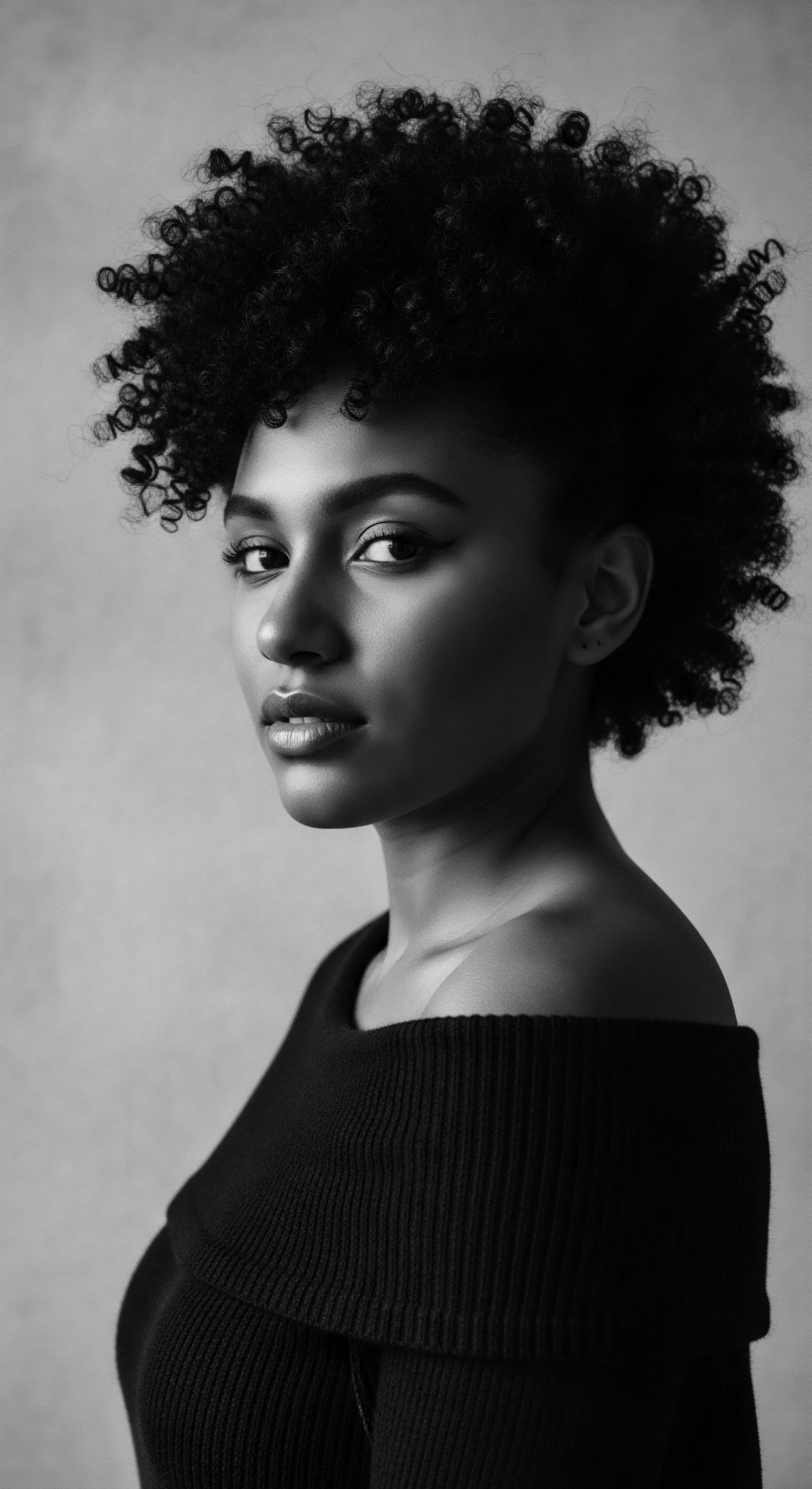
Fundamentals
Mixed Hair Practices, in its most accessible sense, refers to the deliberate and thoughtful methods employed to care for hair that displays more than one distinct texture or curl pattern on a single head. This often arises from a diverse genetic lineage, particularly prevalent within individuals of Black and mixed-race heritage. The very concept acknowledges that hair is not a monolithic entity, even within one person’s scalp. It moves beyond a singular approach to hair care, recognizing that a person’s curls, coils, and waves can vary significantly in their structure, porosity, and needs from one section of the head to another.
At its core, this understanding signifies a departure from the historical imposition of uniform beauty standards, particularly those that favored straight hair. It signals a movement toward embracing the natural diversity of textured hair. This acceptance requires specific knowledge about different hair types, how they respond to moisture, heat, and styling agents, and how to create a harmonious regimen that respects each unique strand. The basic meaning of Mixed Hair Practices thus centers on personalized care, acknowledging the varied genetic gifts present in hair that defies simple categorization.

The Diverse Nature of Hair
Hair, a complex biological fiber, grows from follicles in the scalp. Its appearance, including curl pattern, thickness, and density, is determined by the shape of these follicles and the arrangement of keratin proteins within the hair shaft. Straight hair typically grows from round follicles, while curlier textures emerge from oval or elliptical follicles.
The tighter the curl, the flatter the oval. In individuals with mixed heritage, the genetic contributions from various ancestral lines can lead to a blend of these follicle shapes across the scalp, resulting in a combination of curl patterns.
This inherent diversity means that some areas of the scalp might produce loosely wavy strands, while others might yield tightly coiled hair. Such variations demand a responsive approach to cleansing, conditioning, and styling. Treating all parts of the hair identically would neglect the specific requirements of each texture, potentially leading to dryness, breakage, or diminished vitality in certain areas.
Mixed Hair Practices acknowledges the diverse genetic gifts present in hair that defies simple categorization, necessitating a personalized care approach.
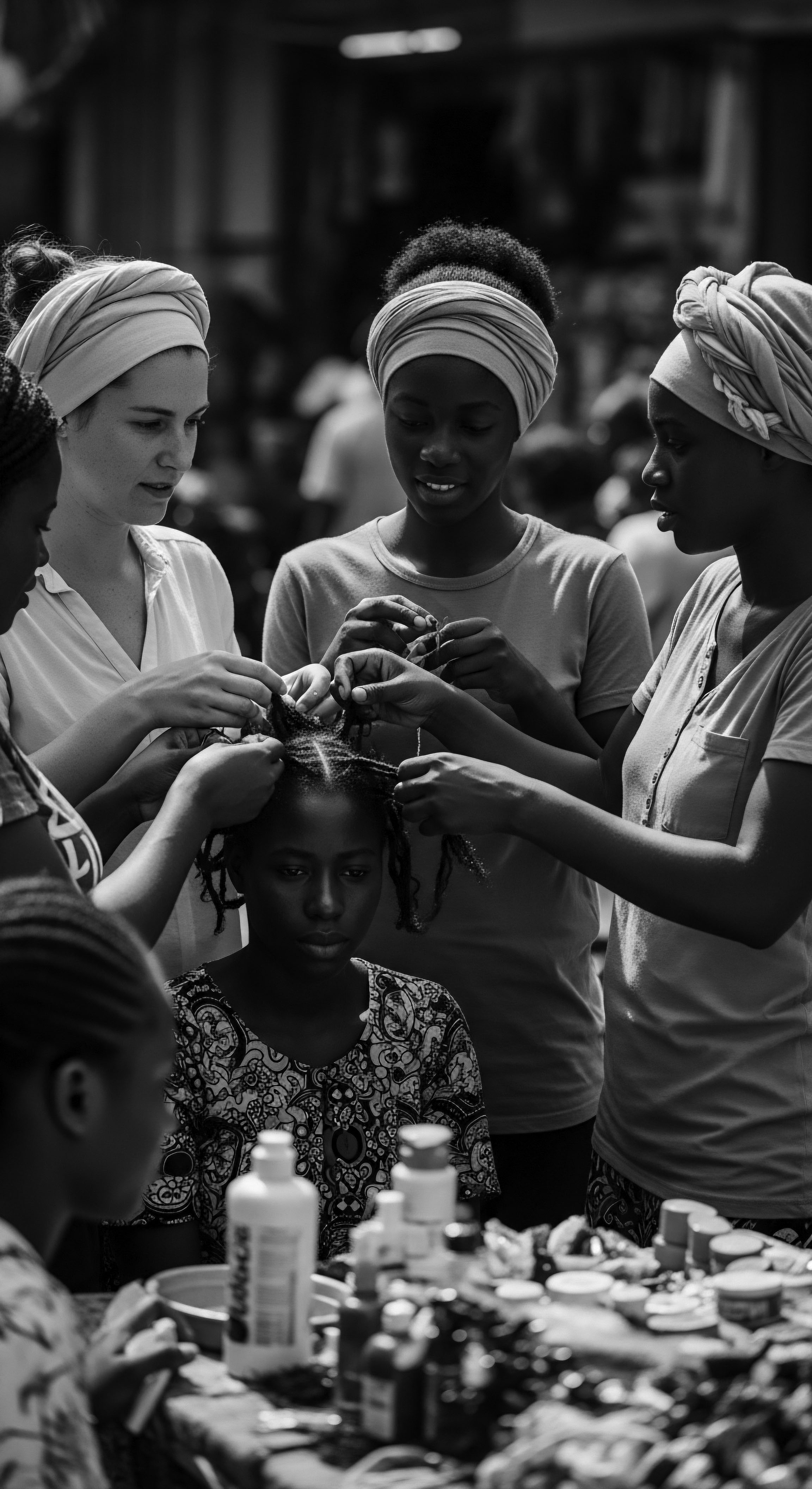
Early Recognition of Hair’s Varied Needs
Even in historical contexts, communities with diverse hair textures, particularly those of African descent, developed methods that intuitively addressed varied hair needs. While not explicitly termed “Mixed Hair Practices,” these ancestral approaches demonstrated an understanding that different hair types required distinct handling. Traditional remedies and styling techniques often involved a range of natural ingredients and tools, applied with an awareness of how hair responded to moisture and manipulation. This early wisdom laid the groundwork for contemporary understandings of hair diversity.
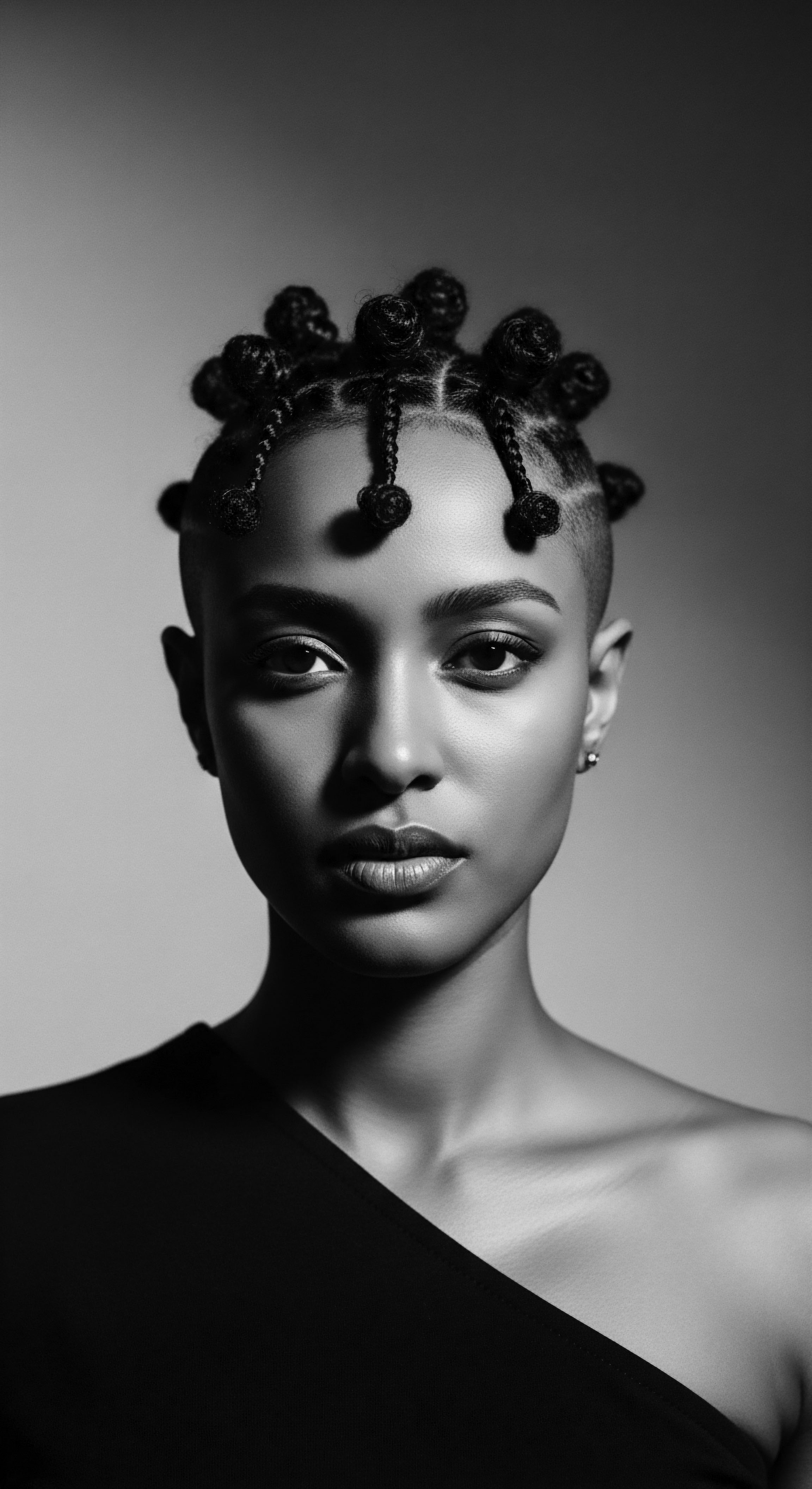
Intermediate
Expanding upon the foundational explanation, Mixed Hair Practices represent a sophisticated methodology for addressing the distinct requirements of hair exhibiting multiple textures. This approach moves beyond surface-level care, delving into the biological intricacies of hair structure and the historical context of its treatment within Black and mixed-race communities. It is a mindful and intentional set of actions, often requiring a deeper understanding of hair science and the ancestral wisdom that has guided hair care for generations.
The significance of these practices extends into understanding the hair’s Porosity, its capacity to absorb and retain moisture, and its Elasticity, its ability to stretch and return to its original state. Hair with tighter curls often has a more open cuticle, making it prone to dryness and breakage, while looser waves might be more susceptible to product buildup. Mixed Hair Practices thus involve a strategic selection of products and techniques to address these varying needs simultaneously, ensuring holistic hair health and appearance.
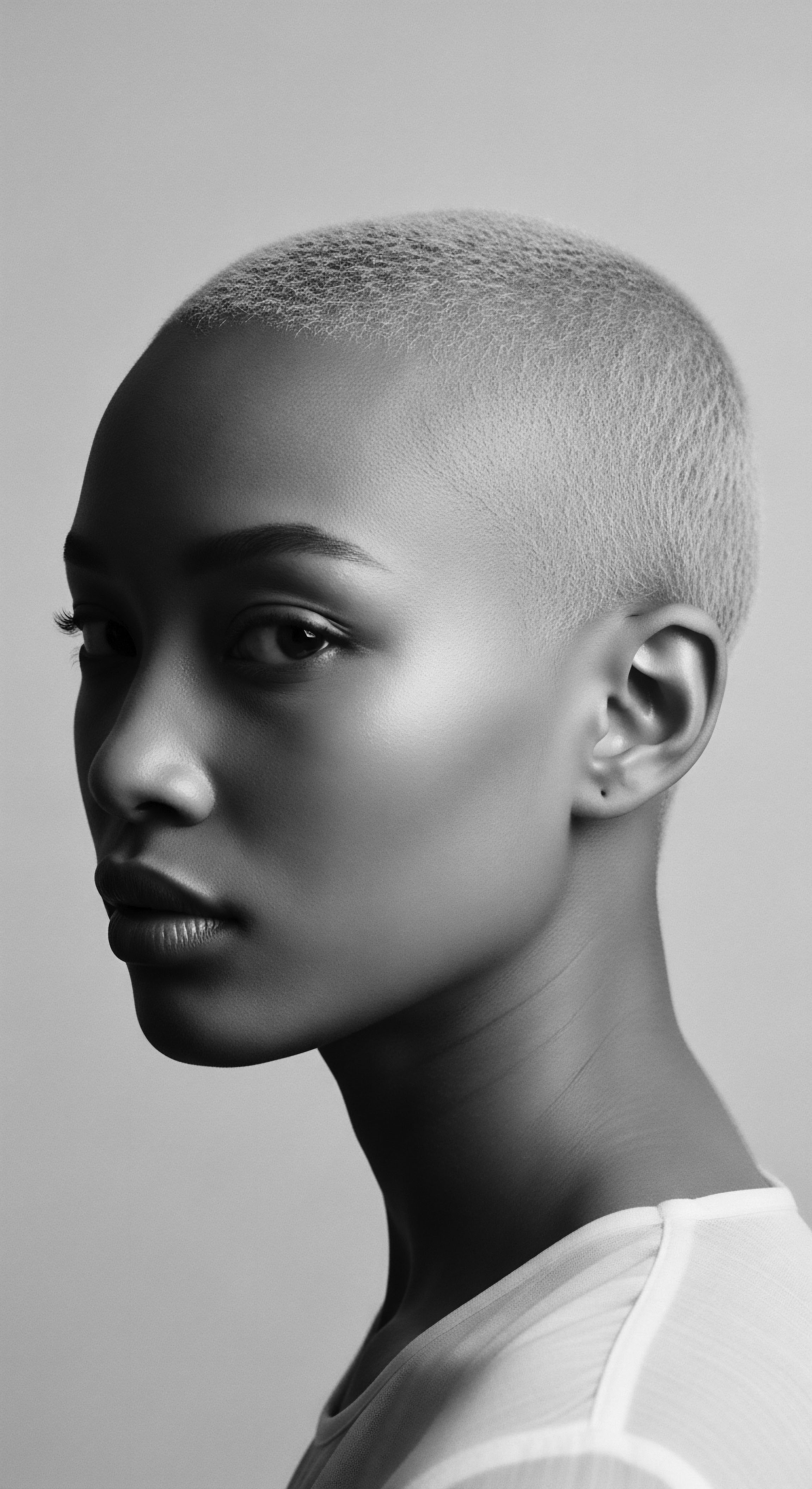
Hair Structure and Its Cultural Implications
The very architecture of textured hair, from its elliptical cross-section to the distribution of disulfide bonds, renders it prone to dryness and fragility compared to straighter hair types. When different curl patterns coexist on one head, these structural variations are amplified. A looser curl may absorb moisture more readily, yet also lose it quickly, while a tighter coil may resist initial moisture penetration but retain it more effectively once saturated. These scientific realities have always informed traditional care, even before the advent of modern trichology.
Throughout history, hair served as a powerful marker of identity, status, and community affiliation in African societies. The appearance of hair, whether tightly coiled or more loosely curled, was often tied to lineage and social standing. Consequently, the development of care rituals was not solely about aesthetics but also about preserving cultural meaning and personal well-being.
Mixed Hair Practices involves strategic product selection and techniques to address varying hair needs simultaneously, ensuring holistic health.
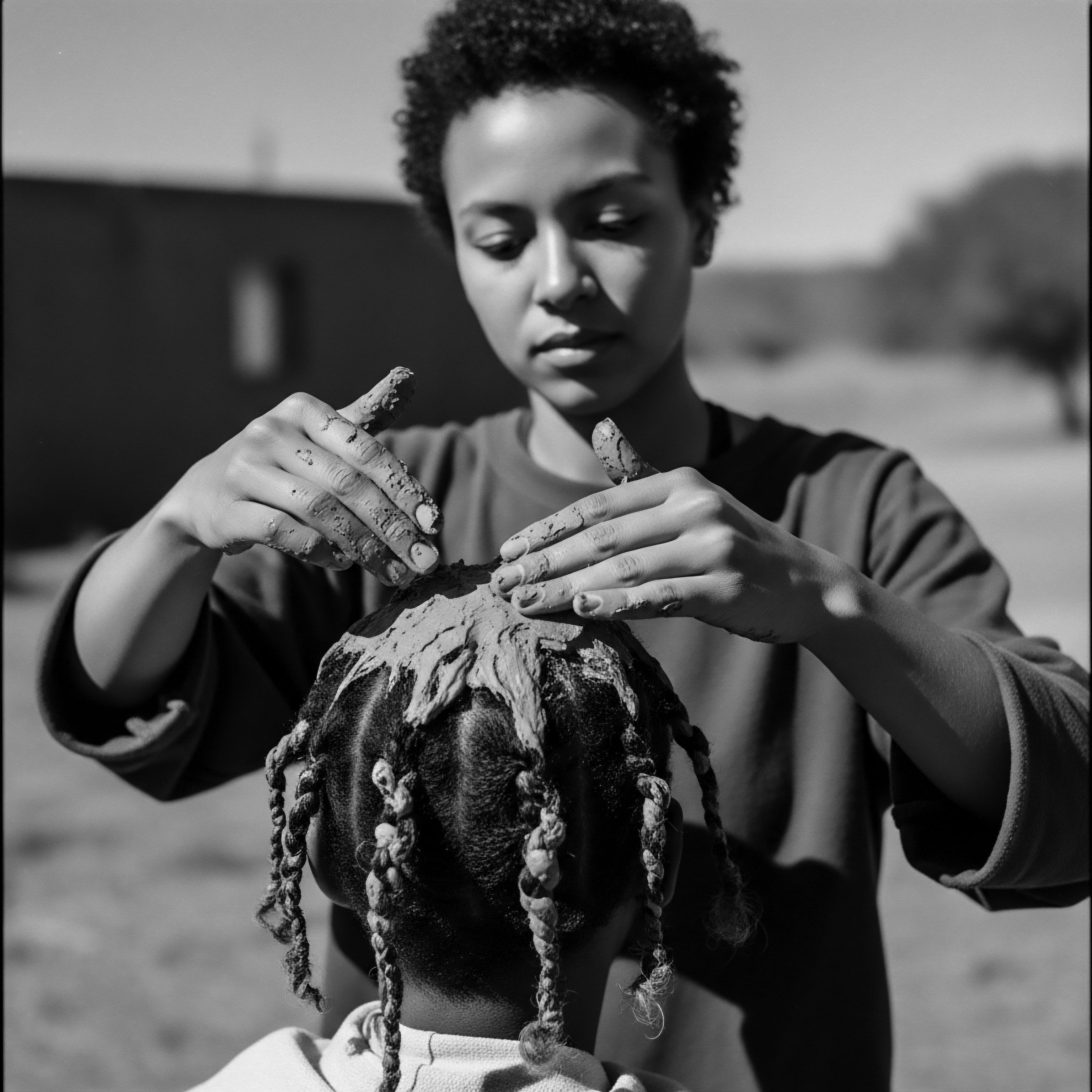
Ancestral Techniques and Their Relevance
Traditional African hair care, long before chemical straightening became widespread, employed a diverse range of practices to maintain the vitality of varied hair textures. These methods often relied on natural ingredients and labor-intensive processes, reflecting a deep respect for the hair’s inherent qualities.
- Oiling and Butters ❉ Across West African traditions, oils and butters like shea butter and coconut oil were used to moisturize and protect hair from harsh climates, often paired with protective styles. Ancient Egyptians used almond and castor oil, while Moroccans favored argan oil. These applications addressed dryness and promoted hair strength.
- Clay Washes ❉ Rhassoul clay from Morocco, for instance, was used for cleansing the hair and scalp without stripping natural oils, a practice still advocated by some for its gentle action on textured hair.
- Braiding and Twisting ❉ Intricate braiding and twisting techniques were not only artistic expressions but also served as protective styles, minimizing manipulation and retaining length. These methods were crucial for managing diverse textures on one head, allowing for growth and reducing breakage.
The understanding of hair’s diverse needs was embedded in these historical practices. For instance, the use of heavier oils on drier, more tightly coiled sections, and lighter applications on looser textures, was an intuitive form of Mixed Hair Practices. These traditional methods, passed down through generations, offer a valuable repository of knowledge for contemporary care, highlighting the enduring wisdom within ancestral communities.
| Aspect of Care Cleansing |
| Ancestral Practices (Pre-19th Century) Natural clays (e.g. Rhassoul), herbal infusions, African black soap. |
| Contemporary Mixed Hair Practices Sulfate-free shampoos, co-washing conditioners, diluted cleansers, occasional clay washes. |
| Aspect of Care Moisture Retention |
| Ancestral Practices (Pre-19th Century) Plant-based oils (e.g. coconut, olive, castor), animal fats, shea butter, marula oil. |
| Contemporary Mixed Hair Practices Leave-in conditioners, moisturizing creams, hair oils, deep conditioning treatments, often layered. |
| Aspect of Care Detangling |
| Ancestral Practices (Pre-19th Century) Finger detangling, wide-tooth combs crafted from wood or bone, application of oils. |
| Contemporary Mixed Hair Practices Wide-tooth combs, detangling brushes, specialized detangling conditioners, finger detangling on wet or damp hair. |
| Aspect of Care Styling/Protection |
| Ancestral Practices (Pre-19th Century) Braids, cornrows, twists, Bantu knots, headwraps, elaborate adornments. |
| Contemporary Mixed Hair Practices Protective styles (braids, twists, locs), low-manipulation styles, use of satin/silk coverings, minimal heat. |
| Aspect of Care This table illustrates the enduring principles of hair care across time, showing how modern practices often echo ancestral wisdom, adapting ingredients and tools while maintaining a focus on preservation and enhancement of textured hair. |
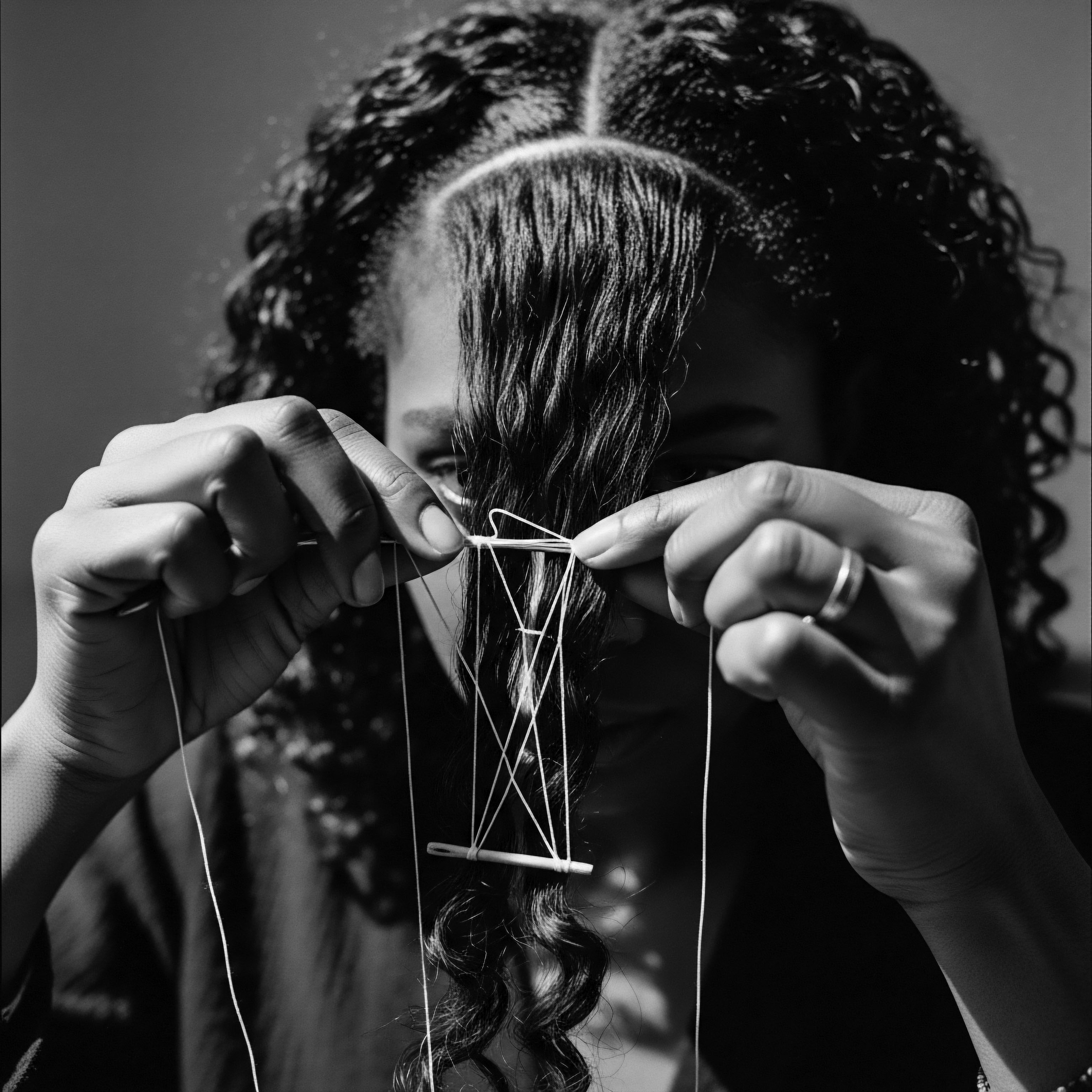
Academic
The academic elucidation of Mixed Hair Practices designates a complex intersectional domain, encompassing the biological realities of hair morphology, the socio-cultural constructs of identity, and the historical trajectories of Black and mixed-race communities. It represents a critical departure from monoracial frameworks of hair classification and care, positing that hair presenting a spectrum of textures on a single scalp demands a nuanced, adaptable, and historically informed methodological approach. This conceptualization acknowledges that hair is not merely an aesthetic appendage but a living archive, bearing the indelible imprints of ancestral migrations, colonial encounters, and ongoing identity negotiations.
The designation of Mixed Hair Practices as a field of study permits a deeper inquiry into the phenotypic expressions of diverse genetic inheritances. It examines how these biological variances influence hair’s structural integrity, moisture dynamics, and responsiveness to various treatments. Beyond the purely scientific, it investigates the semiotics of mixed hair within diasporic contexts, analyzing how its care, styling, and public presentation serve as acts of self-definition, cultural reclamation, and sometimes, quiet defiance against hegemonic beauty norms. This explication requires an interdisciplinary lens, drawing from trichology, anthropology, sociology, and critical race studies to fully comprehend its import.
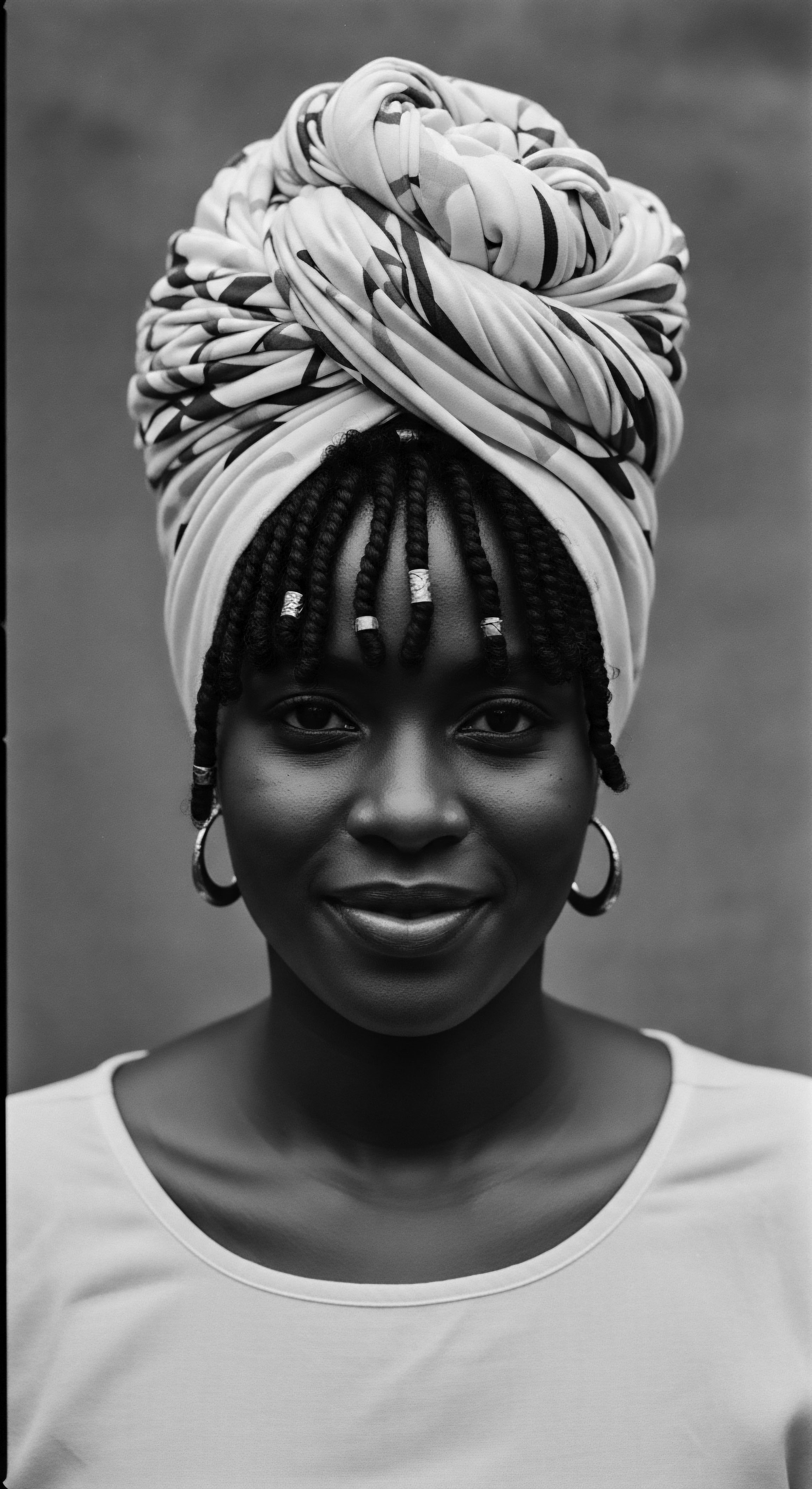
Echoes from the Source ❉ Biology and Ancestry
The biological foundation of mixed hair textures lies in the intricate interplay of genetics. Hair curl patterns are determined by the shape of the hair follicle and the distribution of keratin proteins. Individuals with diverse ancestries, particularly those of African and European or Indigenous descent, frequently inherit a blend of genetic markers that influence hair morphology, leading to a heterogeneous presentation of curl types across the scalp.
This anatomical variability results in strands ranging from loose waves (Type 2) to tight coils (Type 4), often coexisting on the same head. The challenge in care stems from these morphological differences ❉ tightly coiled hair, for instance, possesses an elliptical cross-section and fewer cuticle layers, rendering it more susceptible to dryness and mechanical damage compared to straighter hair with its rounder cross-section and compact cuticle.
A rigorous examination of hair texture diversity, conducted by Loussouarn et al. established a method to define natural hair curliness using curve diameter and curl meters on glass plates to measure the curvature of hair strands. This scientific method allows for assessing the range of curliness within various racial groups without relying solely on ethnic origin, providing a quantifiable basis for understanding the complexities of mixed hair.
The anatomical structure of Afro-textured hair, characterized by its elliptical shape and points of weakness where the curl bends, significantly decreases its tensile strength, making it more fragile and prone to breakage. This inherent fragility necessitates specialized care strategies that account for varied structural integrity within a single head of hair.
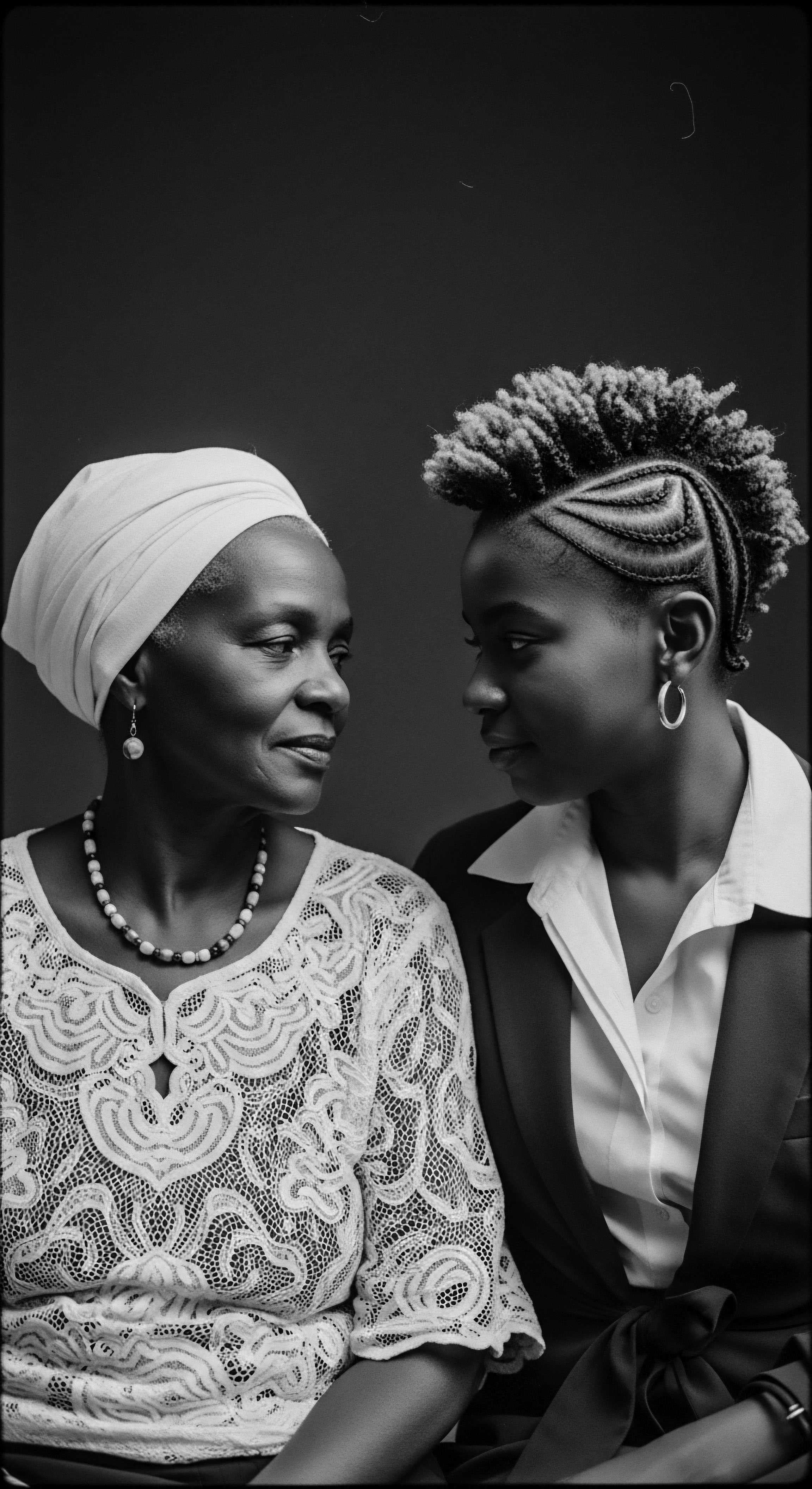
The Enduring Wisdom of Ancestral Hair Care
Long before modern scientific classifications, African communities developed sophisticated hair care systems that intuitively addressed the spectrum of hair textures present among their populations. These practices were not merely cosmetic; they were deeply interwoven with spiritual beliefs, social status, and communal identity. For example, in many African societies, hairstyles communicated age, marital status, tribal affiliation, and even life events. The care of hair was a communal activity, passed down through generations, embodying a collective wisdom regarding moisture retention, protection, and gentle manipulation.
One compelling historical example of ancestral ingenuity in hair care, particularly relevant to mixed hair practices, can be observed in the traditional methods of the Basara tribe of Chad. These communities have long employed a practice involving a mixture of herbs and animal fat, often referred to as “Chebe,” applied weekly to their hair. This application, followed by braiding, is a technique specifically designed for extreme length retention. The mixture coats the hair strands, reducing friction and minimizing breakage, which is particularly beneficial for highly textured hair prone to dryness and tangling.
This method, passed down through generations, represents a sophisticated understanding of protective styling and moisture sealing, directly addressing the vulnerabilities of coily hair types. While the Basara practice might not explicitly address “mixed” textures in the modern sense, its principles of protecting fragile strands and promoting length retention are directly applicable to the challenges faced by individuals with a combination of curl patterns. It serves as a powerful illustration of how indigenous knowledge systems devised effective solutions for textured hair care, often anticipating scientific understandings of hair health.
The deliberate use of oils and butters, such as shea butter and marula oil, found across the African continent, speaks to an ancestral understanding of hair’s need for lubrication and sealing. These substances, often infused with botanicals, provided vital moisture and created a protective barrier against environmental stressors. The widespread adoption of braiding, twisting, and knotting styles across various African cultures was not merely for adornment; these were highly functional protective styles that minimized manipulation and shielded delicate strands from damage. Such historical practices offer a rich legacy for contemporary Mixed Hair Practices, providing a blueprint for nurturing diverse textures with reverence and efficacy.
Ancestral hair care, like the Basara tribe’s Chebe practice, reveals sophisticated methods for protecting and nurturing diverse hair textures, predating modern scientific understanding.

The Tender Thread ❉ Care and Community
The rituals surrounding hair care in Black and mixed-race communities have historically served as a profound medium for intergenerational connection and the transmission of cultural knowledge. These moments, often spent in close physical proximity, braiding or oiling hair, became informal academies where ancestral wisdom about hair types, remedies, and styling was imparted. The physical act of tending to hair was a tangible expression of love, care, and communal identity. This communal aspect is particularly poignant when considering the historical context of forced migration and enslavement, where hair practices became acts of resistance and cultural preservation.
During periods of immense oppression, hair served as a silent language. For instance, enslaved African women in the Americas ingeniously used cornrows to hide seeds for planting, or even to map escape routes to freedom. This practice highlights how hair care was not merely about appearance, but about survival, resilience, and the covert maintenance of cultural identity.
The intricate patterns conveyed messages that transcended spoken language, a testament to the deep semiotic meaning embedded within these hair traditions. The continuity of such practices, despite systematic attempts at cultural erasure, speaks to the enduring strength of heritage.
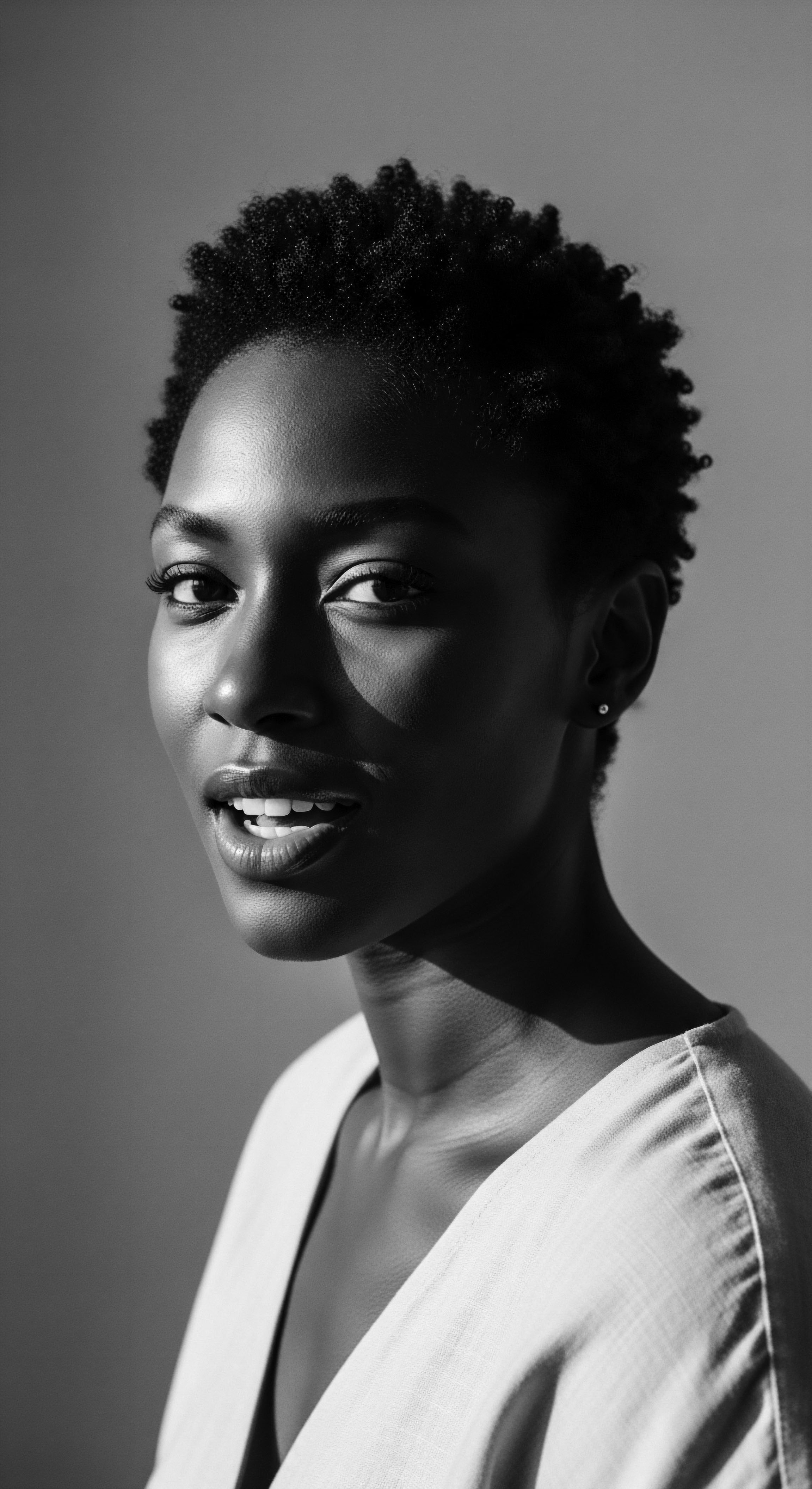
Diasporic Adaptations and Innovations
The movement of African peoples across the globe led to the adaptation and innovation of hair practices, influenced by new environments, available resources, and prevailing social pressures. In the Caribbean and Latin America, for example, the confluence of African, Indigenous, and European cultures gave rise to unique hair care traditions that often addressed a wide spectrum of hair textures. The term “good hair,” often signifying straighter textures, emerged as a colonial construct, influencing beauty standards and sometimes leading to the chemical alteration of hair. Yet, even within these pressures, practices aimed at maintaining hair health and cultural connection persisted.
The 20th century witnessed the rise of figures like Madam C.J. Walker, who, while promoting hair straightening products, also established a system for training Black women in hair care, creating economic opportunities and a network of beauty professionals. Her work, despite its complexities, contributed to a burgeoning industry that addressed the specific needs of Black hair, including mixed textures, even if the dominant aesthetic of the time leaned towards straightened styles.
The later Black Power and Natural Hair Movements of the 1960s and beyond explicitly reclaimed Afro-textured hair as a symbol of pride and resistance, challenging Eurocentric beauty ideals and promoting the celebration of natural curls and coils. These movements spurred renewed interest in traditional African hair care ingredients and techniques, demonstrating a cyclical return to ancestral wisdom.
The ongoing popularity of protective styles like braids, twists, and locs across the diaspora speaks to their continued relevance for managing and nurturing diverse hair textures. These styles not only protect the hair from environmental damage and manipulation but also serve as visible markers of cultural pride and connection to ancestral roots. They allow individuals with mixed textures to maintain length and health while honoring their heritage.
- Harlem Renaissance Hair Innovations ❉ During the Harlem Renaissance, a period of profound cultural expression in the 1920s and 30s, African American individuals began to explore and celebrate their natural hair, alongside adopting styles like the finger wave. This era saw the emergence of sculptural styles that reflected both traditional African aesthetics and contemporary influences, showcasing the artistic and cultural significance of hair during a period of racial pride.
- Jojoba Oil’s Rise ❉ In the 1970s, as the “Black is Beautiful” movement gained momentum, there was a surge in the focus on natural hairstyles and Black-owned beauty products. Jojoba oil, a liquid wax ester, gained prominence during this time, not only for its versatility but also for its ability to address dryness and breakage common in textured hair types. Its ability to mimic the scalp’s natural oils made it a vital ingredient in Black beauty rituals, symbolizing an act of resistance against Eurocentric beauty ideals.
- The Afro Comb’s Evolution ❉ The afro comb, or pick, holds a history stretching back over 6,000 years in Africa, found in ancient civilizations like Kush and Kemet. Beyond its utility, it symbolized status, group affiliation, and religious beliefs, often decorated with motifs referencing nature. In the 20th century, particularly during the Black Power movement, the afro comb with the “black fist” emblem became a potent political and cultural symbol, worn as an adornment and a declaration of collective identity and pride in natural hair.
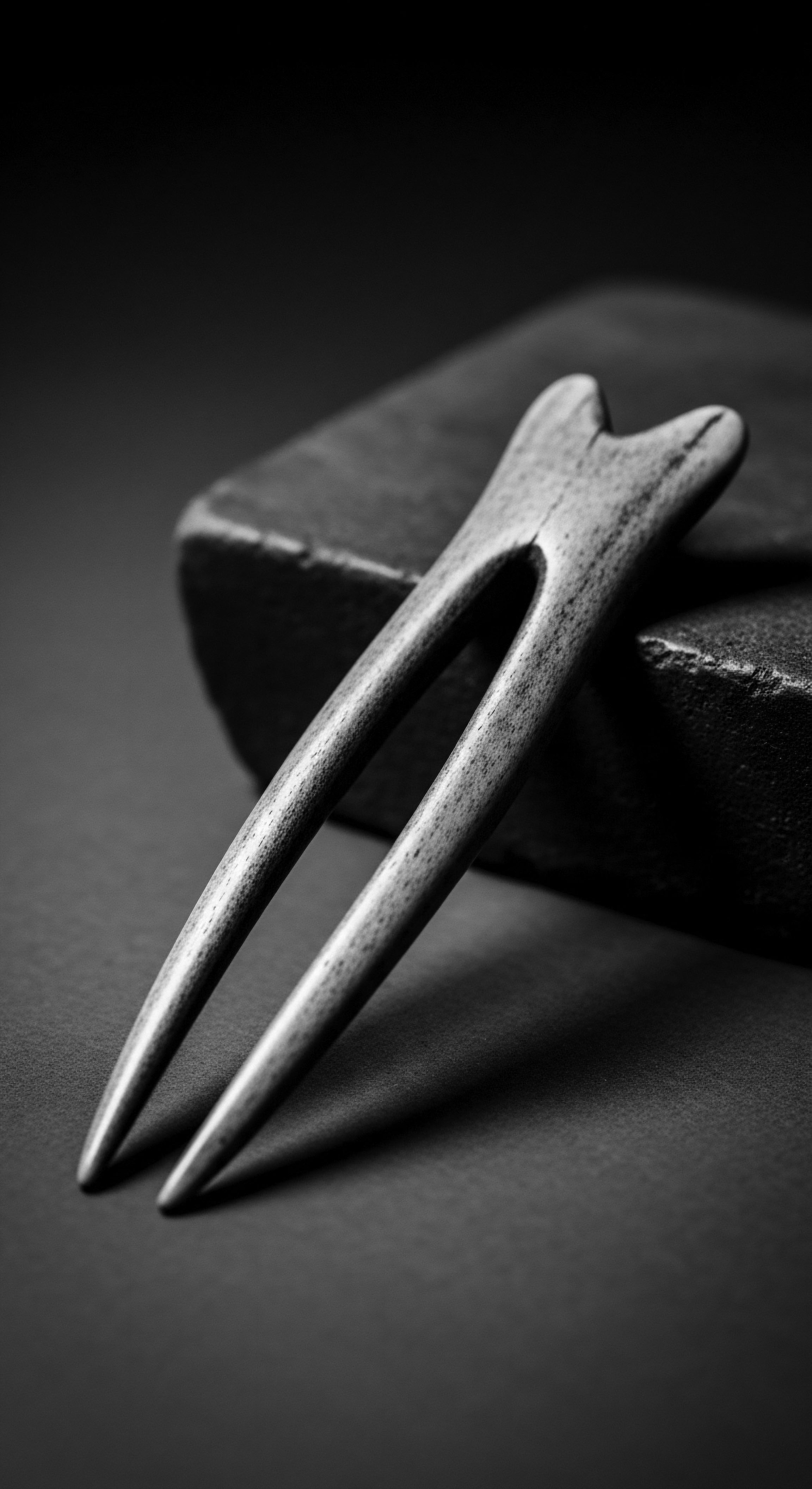
The Unbound Helix ❉ Voicing Identity and Shaping Futures
Mixed Hair Practices are deeply intertwined with the psychological and social construction of identity for individuals of Black and mixed heritage. Hair, in this context, becomes a tangible manifestation of one’s complex lineage, a visual declaration of ancestral connections. The decision to wear hair in its natural state, to chemically alter it, or to adopt protective styles is often a deeply personal one, influenced by familial traditions, community expectations, and societal pressures.
This choice can be a powerful assertion of identity, particularly in spaces where Eurocentric beauty standards historically dominated. The constant negotiation of how one’s hair is perceived, both within and outside one’s community, underscores the profound sociological weight placed upon textured hair.
Research indicates that approximately 11% of multiracial adults have worn their hair in a certain way to influence how others perceive their race. This statistic, though seemingly small, illuminates the subtle yet persistent pressures individuals face to conform or to strategically present their identity through their appearance. The perception of “good hair” versus “bad hair” has historically impacted social and economic opportunities, with straighter textures often being associated with professionalism and acceptance in dominant society. The continued existence of hair discrimination in workplaces and educational institutions, where Black women are disproportionately labeled unprofessional due to their natural hair, highlights the ongoing struggle for acceptance and self-determination.
Hair choices for mixed heritage individuals are powerful acts of self-definition, reflecting a negotiation between ancestral legacies and societal perceptions.
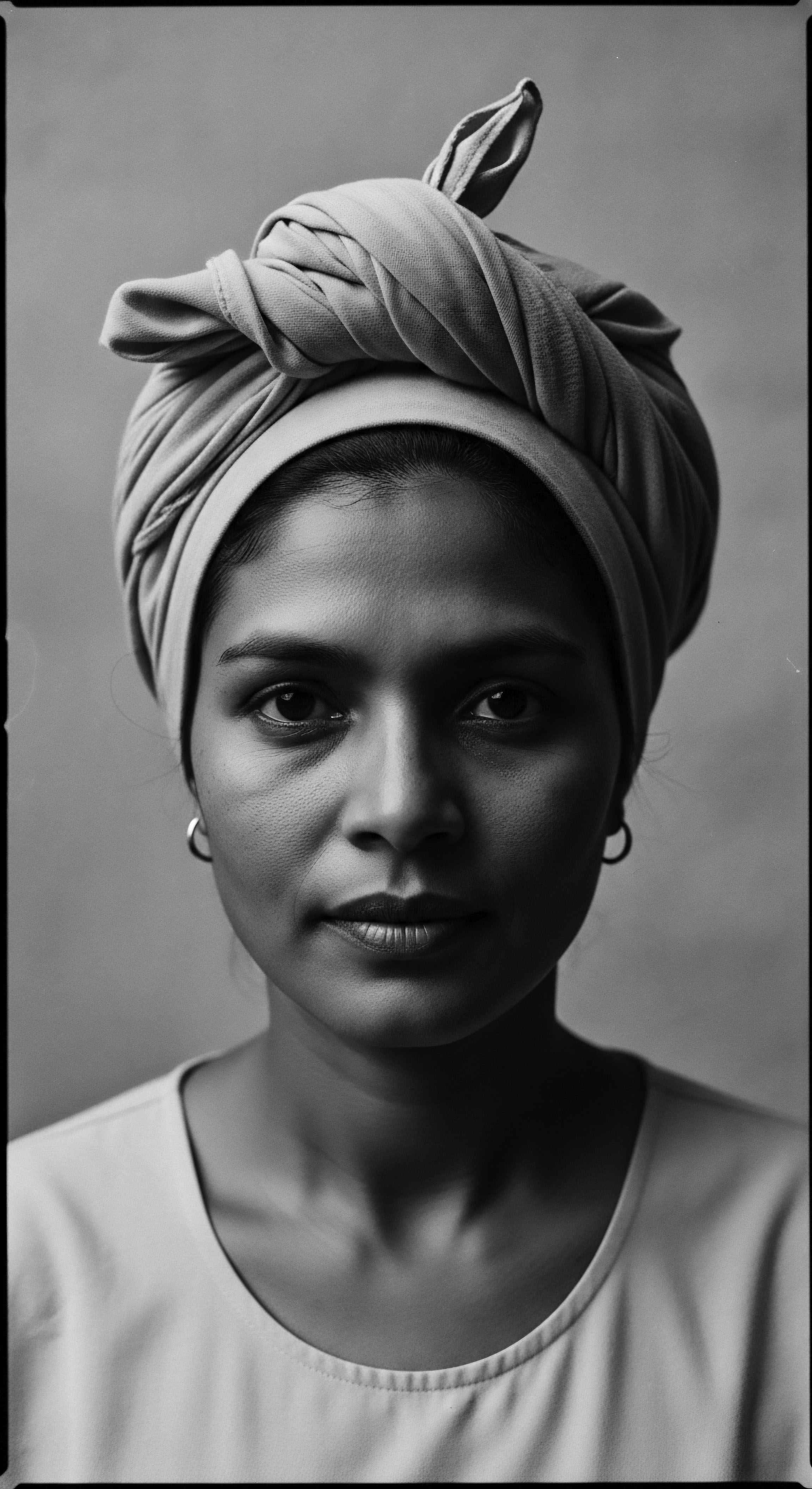
Future Directions in Hair Care and Identity Reclamation
The trajectory of Mixed Hair Practices points toward a future where diversity is not merely tolerated but celebrated as a source of strength and beauty. This involves continued scientific inquiry into the unique properties of various hair textures, leading to more tailored and effective care solutions. It also requires a sustained effort to dismantle discriminatory practices and societal biases that devalue natural textured hair. The conversation around hair care is increasingly shifting from “fixing” perceived imperfections to nourishing and enhancing the hair’s inherent qualities, honoring its ancestral roots.
Education plays a paramount role in this future. Providing individuals with accurate, culturally sensitive information about their hair types, combined with knowledge of both modern trichology and traditional care methods, empowers them to make informed choices. This includes understanding the impact of environmental factors, product ingredients, and styling techniques on hair health. Moreover, supporting Black and mixed-race hair care entrepreneurs who develop products and services specifically for diverse textures reinforces a market that values and serves these communities authentically.
The ongoing movement towards natural hair is a testament to this reclamation of identity and heritage. It is a collective affirmation that every curl, coil, and wave holds a story of resilience, beauty, and connection to a rich ancestral past. Mixed Hair Practices, therefore, are not static prescriptions; they are living traditions, evolving with each generation, yet always anchored in the profound heritage of textured hair. They represent a conscious choice to care for hair not as a burden, but as a cherished extension of self and lineage.
| Era Pre-Colonial Africa |
| Dominant Societal Norms Hair as a symbol of identity, status, spirituality; communal care. |
| Impact on Mixed Hair Practices Practices centered on nurturing natural textures, diverse styles reflecting lineage and life events. |
| Era Slavery & Post-Emancipation (Early 20th Century) |
| Dominant Societal Norms Eurocentric beauty ideals; pressure to straighten hair for social acceptance. |
| Impact on Mixed Hair Practices Increased use of hot combs and chemical relaxers; covert cultural hair practices persisted (e.g. braiding as communication). |
| Era Mid-20th Century (Black Power/Civil Rights) |
| Dominant Societal Norms Reclamation of Black identity; "Black is Beautiful" movement. |
| Impact on Mixed Hair Practices Resurgence of natural styles (Afro); increased pride in diverse textures; new product development for natural hair. |
| Era Contemporary Era |
| Dominant Societal Norms Growing acceptance of natural hair; ongoing fight against hair discrimination; globalized beauty. |
| Impact on Mixed Hair Practices Focus on personalized care for multiple textures; blending traditional ingredients with scientific understanding; digital communities for shared knowledge. |
| Era This table illustrates how broader societal norms have shaped and continue to shape the evolution of Mixed Hair Practices, from deep ancestral reverence to modern-day acts of self-determination. |
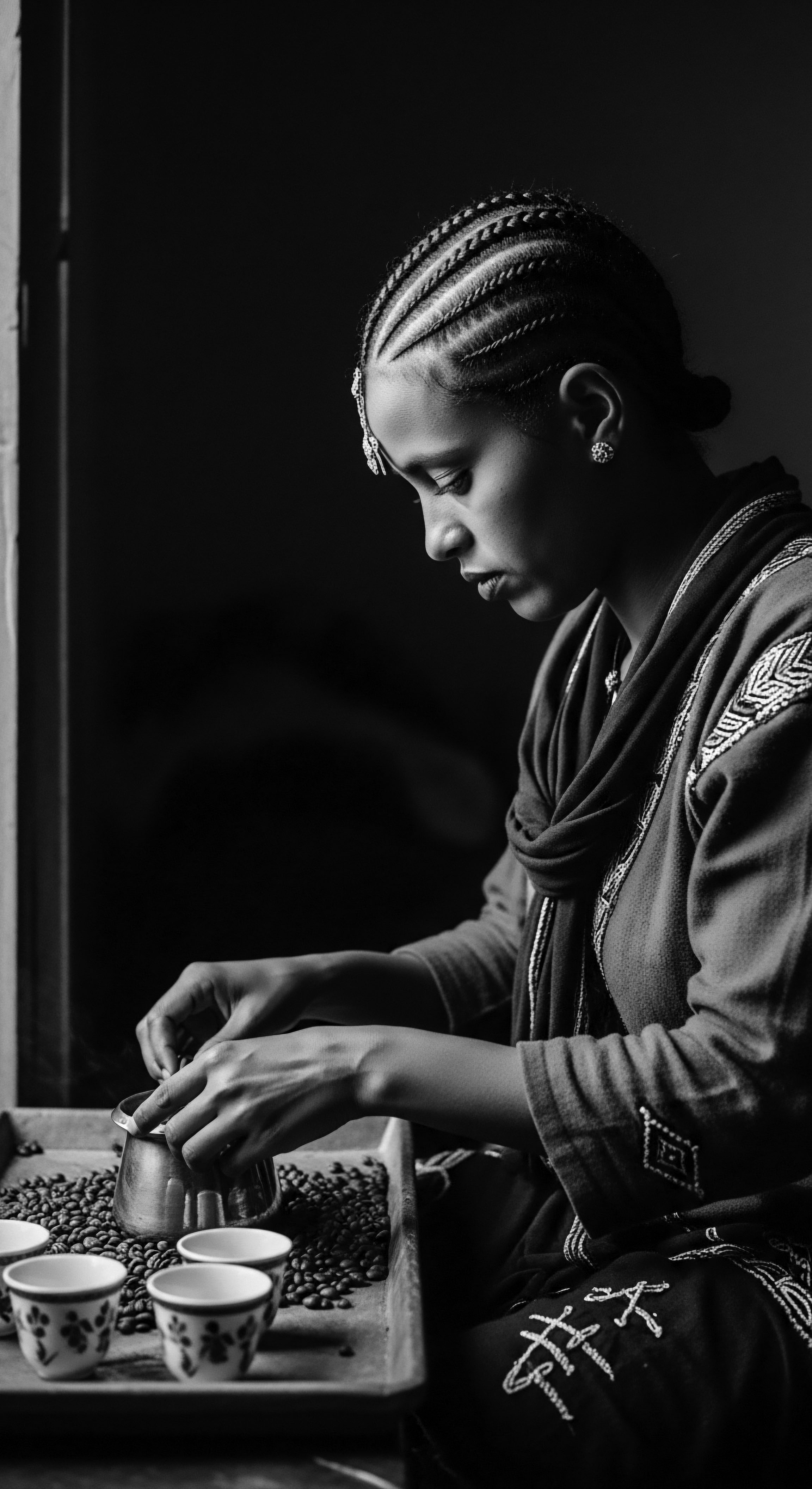
Reflection on the Heritage of Mixed Hair Practices
The journey through Mixed Hair Practices is a profound meditation on the enduring spirit of textured hair. It is a recognition that each curl, each coil, each wave carries within it the echoes of countless generations, a silent testament to survival, creativity, and self-expression. Roothea’s living library endeavors to honor this legacy, presenting hair not merely as a biological structure but as a repository of ancestral wisdom and cultural memory. The care bestowed upon mixed textures becomes a ritual, a tender dialogue with the past, a celebration of resilience that transcends time and geography.
The intricate patterns of varied hair, often seen as a challenge in a world of singular beauty ideals, stand as a testament to the beautiful complexity of human lineage. Understanding and tending to these diverse strands is an act of deep reverence, a connection to the hands that braided, oiled, and adorned hair through centuries of joy, struggle, and triumph. This care is not just about aesthetics; it is about grounding oneself in a heritage that refuses to be forgotten, a heritage that continues to bloom in vibrant, unbound helices. It is a quiet yet powerful affirmation of identity, whispering stories of strength from the very roots.
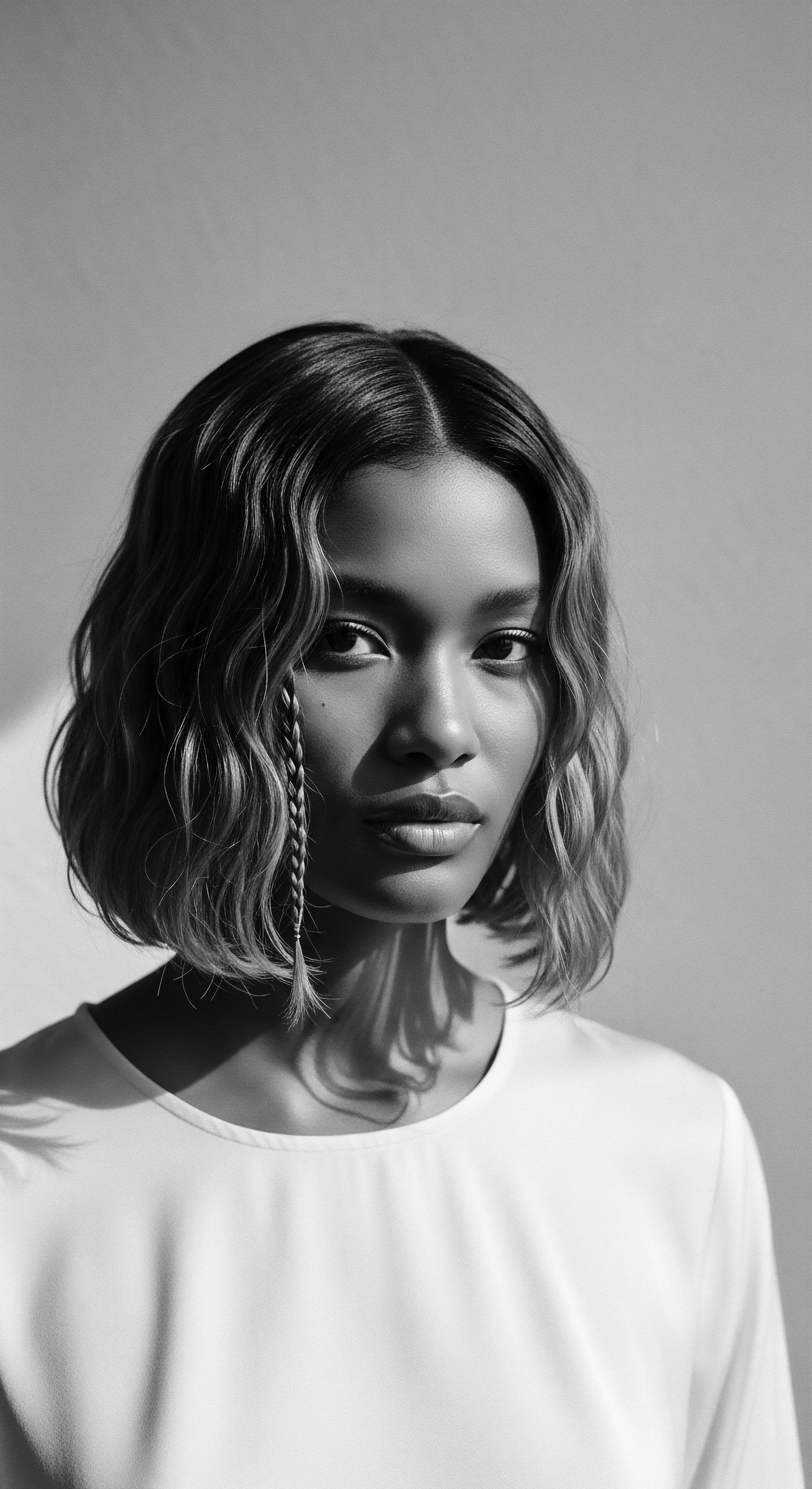
References
- Byrd, A. D. & Tharps, L. (2014). Hair Story ❉ Untangling the Roots of Black Hair in America. St. Martin’s Press.
- Chapman, A. (2013). Hair It Is ❉ Examining the Experiences of Black Women with Natural Hair. Smith Scholarworks.
- Hernández, T. K. (2014). Multiracials and Civil Rights ❉ Mixed-Race Stories of Discrimination. NYU Press.
- Loussouarn, G. et al. (2005). African hair morphology ❉ an investigation of the curvature and cross-sectional shape of hair fibres in a diverse African population. International Journal of Dermatology, 44(S1), 2-6.
- Oforiwa, A. (2023). The History and Culture of African Natural Hair ❉ From Ancient Times to Modern Trends. AMAKA Studio.
- Patton, T. O. (2006). Hey Girl, Am I More Than My Hair? ❉ African American Women and Their Struggles with Beauty, Body Image, and Hair. Peter Lang Publishing.
- Pew Research Center. (2015). Multiracial in America ❉ Proud, Diverse and Growing in Numbers. Pew Research Center.
- Rosado, S. (2003). African-American women and their hair ❉ The historical and contemporary struggle. Journal of Black Studies, 33(5), 605-618.
- Tate, S. (2007). Black Beauty ❉ African American Women and the Politics of Race and Identity. Routledge.
- Thompson, C. (2009). Black Women and Beauty Culture in 20th-Century America. Oxford Research Encyclopedia of American History.
